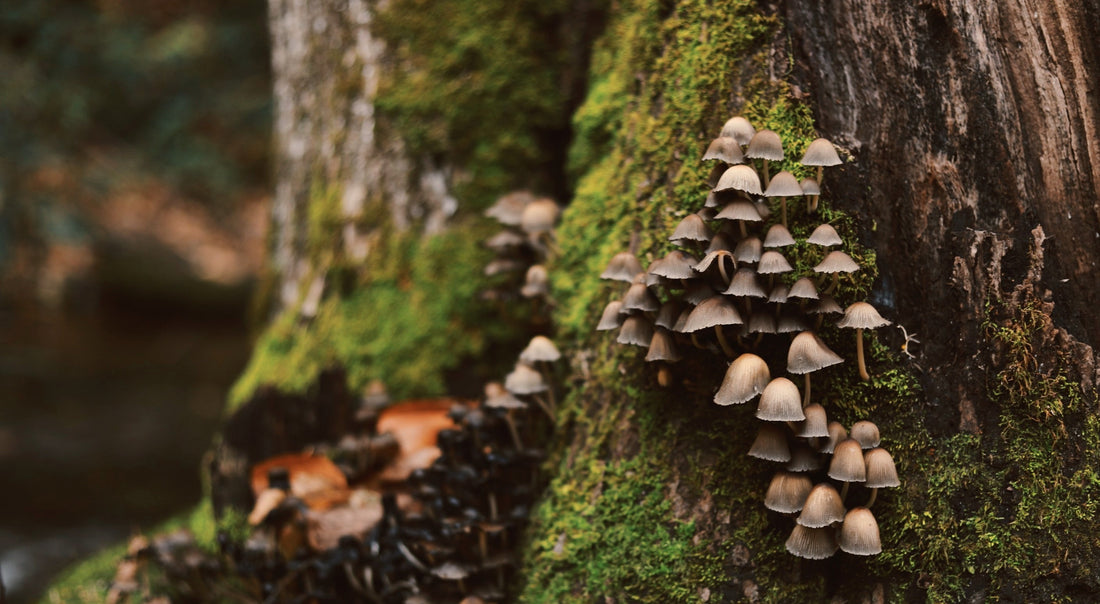
Indulging in Fall Comfort: A Guide to Forest Treasures and Culinary Delights
SHOO-FOO TeamShare
It's undeniable, the warm colors of autumn act on us like a magnet. Fall wouldn't be fall without a walk in the woods, would it? It is as if by shedding its leaves, forest reveals many of its mysteries.
One way to harness the magic of Fall is to embrace the beauty of nature, to re-connect more intimately with Nature. But if a simple walk in the woods is a sensory pleasure, it also offers the possibility of making discoveries, delicious finds!
Keep reading, we’ll tell you more about some of the forest's hidden delicacies.
The Fall Forest: A Realm of Hidden Delicacies
Here is a beginner’s guide to what could be forage in Canadian and American forests during the month of October!
The Harvest of Mushrooms

Various edible mushrooms can be found in forest in October. Often hidden beneath the forest floor or nestled in the shadows of fallen leaves, mushrooms are one of nature's greatest treats. Several varieties of mushrooms make their appearance at that time of the year, and some are safe for foraging.
If you are new to mushrooms, try to go with a friend who has a good knowledge of mushroom the first time. Or join a group of mushrooms-lovers in your area. They are plenty of them! Most of forest mushrooms are edible but some can be toxic, be vigilant.
- Chanterelles (Cantharellus spp.)
- Hedgehog Mushrooms (Hydnum repandum)
Recognizable by their distinctive spiky underside instead of traditional gills, hedgehog mushrooms are both flavorful and safe for novice foragers. They have a slightly sweet and nutty taste, making them a delightful addition to autumn recipes.
- Hen-of-the-Woods (Grifola frondosa)
Also known as maitake, the Hen-of-the-Woods resembles the feathers of a hen and is often found growing at the base of trees. With a robust, earthy flavor and tender texture, hen-of-the-woods is a favorite among foragers and chefs alike.
Nuts: The Essence of Fall

Autumn is synonymous with nuts—the quintessential harvest of the season. Nuts not only serve as a delicious snack but also as versatile ingredients for a myriad of culinary creations.
- Pine Nuts (Pinus spp.)
Pine nuts, harvested from various pine tree species, provide a delightful crunch and a nutty, buttery flavor. They are a staple in Mediterranean cuisine and can be used in both savory and sweet dishes. The 2 most popular Pine trees providing pine nuts in North America are:
- Walnuts (Juglans spp.)
Walnuts are widely distributed across North America and are known for their rich, slightly bitter flavor. They can be eaten raw or roasted and are often used in baking and cooking. Whether tossed in salads, used in baking, or simply enjoyed on their own, walnuts are a versatile and heart-healthy treat.
- Acorn Nuts (Quercus spp.)
Acorns are abundant and can be found throughout North America. They require processing to remove bitter tannins before consumption, but they can be used to make flour or roasted for a nutty flavor.
Rosehips: The Gems of the Forest

Rosehips, the fruit of wild roses, grace the fall forest with their bright red hues. Packed with vitamin C and antioxidants, these tiny fruits add a tangy, slightly sweet flavor to teas, jams, jellies, and baked goods. Do a quick search for a DIY Rosehips syrup, it’s easy! Then, you can add your homemade Rosehips syrup to your tea, favorite dessert or even your salad dressings.
Wild Greens and Herbs: A Nutrient-Rich Harvest
Amidst the falling leaves, wild greens and herbs continue to thrive, offering a nutritious and flavorful addition to fall harvesting.
- Chickweed (Stellaria media):
Chickweed is a cosmopolitan plant found across North America, Europe, Asia, and many other regions. It's known for its small, star-like white flowers. It has tender leaves and a mild, slightly sweet flavor. It can be used fresh in salads or as a cooked green in various dishes.
- Wood Sorrel (Oxalis spp.):
Wood sorrel species grow in North America, Europe, and various regions. They often thrive in woodland settings and along the edges of trails. Wood sorrel leaves have a tangy, lemony flavor. They can be used in salads or as a garnish.
- Goldenrod (Solidago spp.):
Goldenrod species are prevalent in North America, including the United States and Canada. They are commonly found in fields, meadows, and open woodlands. Goldenrod leaves are mild and slightly bitter. They can be used in salads or as a cooked green.
Embracing the Joy of Fall Forest Harvesting, sustainably.
As we explore the fall forest and uncover its hidden delicacies, let’s do it safely, responsibly and eco sustainably. Only take what we need and leave the rest to all the other inhabitants of the forest. Immersing in the beauty of autumn, savoring the flavors of the season, and let nature's gifts nourish both our body and soul.
And while you are not in the woods...
Discover What's on Sale this Month!
or Pre-Order to Save even more :)

